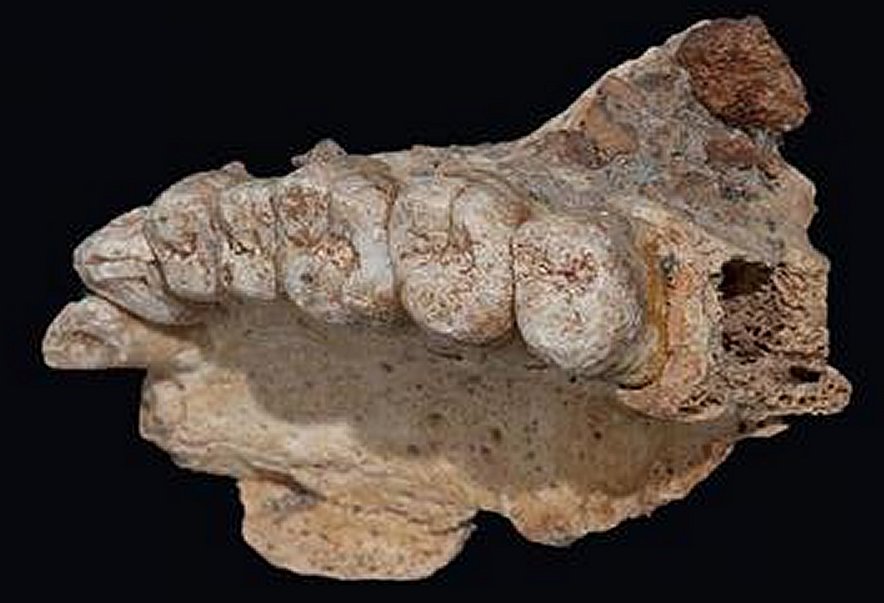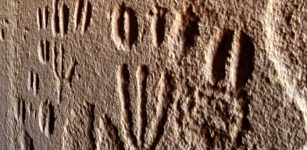Earliest Modern Human Fossil Outside Africa Unearthed At Misliya Cave, Israel
AncientPages.com - Up till now, the earliest modern human fossils found outside of Africa are dated to around 90,000 to 120,000 years ago at the Levantine sites of Skhul and Qafzeh.
Skhul Cave is on the slopes of Mount Carmel and Qafzeh Cave is a rockshelter in Lower Galilee.
A maxilla with associated dentition recently discovered at Misliya Cave, Mount Carmel,
Israel, date back to 177,000 to 194,000 years ago, suggesting that members of the Homo sapiens clade left Africa earlier than previously thought.
This discovery of an adult upper jawbone with several teeth, pushes back history of Homo sapiens migration to the Levant by at least 50,000 years, say TAU and University of Haifa researchers who cooperated with their colleagues from Binghamton University and State University of New York.
It is the earliest modern human fossil ever found outside of Africa. The finding suggests that modern humans left the continent at least 50,000 years earlier than previously thought.
"Misliya is an exciting discovery," says Rolf Quam, Binghamton University anthropology professor and a coauthor of the study.
"It provides the clearest evidence yet that our ancestors first migrated out of Africa much earlier than we previously believed. It also means that modern humans were potentially meeting and interacting during a longer period of time with other archaic human groups, providing more opportunity for cultural and biological exchanges."
"While all of the anatomical details in the Misliya fossil are fully consistent with modern humans, some features are also found in Neandertals and other human groups," said Quam, associate professor of anthropology at Binghamton.
"One of the challenges in this study was identifying features in Misliya that are found only in modern humans. These are the features that provide the clearest signal of what species the Misliya fossil represents."
The scientists applied various dating techniques to the fossil to determine that the jawbone is at least 170,000 years old. They also analyzed the remains using microCT scans and 3D virtual models to compare it with other hominin fossils discovered in parts of Africa, Europe and Asia.
![The Skhul/Qafzeh hominins or Qafzeh–Skhul early modern humans[1] are hominin fossils discovered in the Qafzeh and Es Skhul Caves in Israel. They are today classified as Homo sapiens, among the earliest of their species in Eurasia. Skhul Cave is on the slopes of Mount Carmel; Qafzeh Cave is a rockshelter in Lower Galilee.](https://www.ancientpages.com/wp-content/uploads/2018/01/israelfossilhumansearliest14.jpg)
The Skhul/Qafzeh hominins or Qafzeh–Skhul early modern humans[1] are hominin fossils discovered in the Qafzeh and Es Skhul Caves in Israel. They are today classified as Homo sapiens, among the earliest of their species in Eurasia. Skhul Cave is on the slopes of Mount Carmel; Qafzeh Cave is a rockshelter in Lower Galilee.
Prof. Israel Hershkovitz from Tel Aviv University, who led the team of researchers, said that the "finding completely changes our view on modern human dispersal and the history of modern human evolution."
"But if the fossil at Misliya dates to roughly 170,000-190,000 years ago, the entire narrative of the evolution of Homo sapiens must be pushed back by at least 100,000-200,000 years," he said.
"In other words, if modern humans started traveling out of Africa some 200,000 years ago, it follows that they must have originated in Africa at least 300,000-500,000 years ago."
The inhabitants of Misliya Cave were capable hunters of large game species, controlled the production of fire and were associated with an Early Middle Paleolithic stone tool kit, similar to that found with the earliest modern humans in Africa. While older fossils of modern humans have been found in Africa, the timing and routes of modern human migration out of Africa are key issues for understanding the evolution of our own species, said the researchers.
The region of the Middle East represents a major corridor for hominin migrations during the Pleistocene and has been occupied at different times by both modern humans and Neanderthals.
AncientPages.com
Expand for references





















